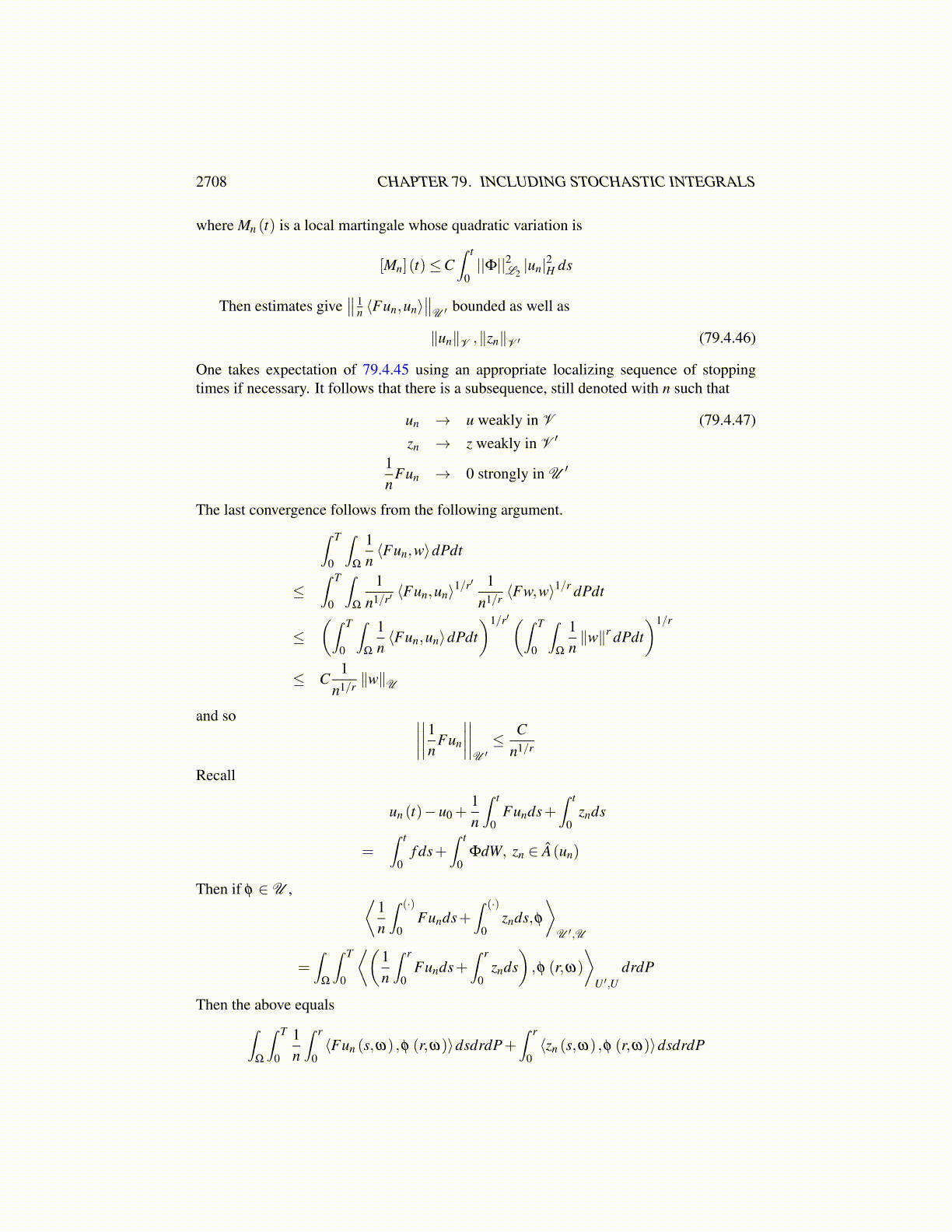
2708 CHAPTER 79. INCLUDING STOCHASTIC INTEGRALS
and this reduces to
λeλ (·)(
w−∫ (·)
0e−λ (·)
ΦdW)+ eλ (·)
(w−
∫ (·)
0e−λ (·)
ΦdW)′
+1n
F(
eλ (·)w)+A
(eλ (·)w, t,ω
)= f
and this reduces to
λ
(w−
∫ (·)
0e−λ (·)
ΦdW)+
(w−
∫ (·)
0e−λ (·)
ΦdW)′
+e−λ (·) 1n
F(
eλ (·)w)+ e−λ (·)A
(eλ (·)w, t,ω
)= e−λ (·) f , w(0) = u0
which implies (w−
∫ (·)
0e−λ (·)
ΦdW)′
+λw+ e−λ (·) 1n
F(
eλ (·)w)
+e−λ (·)A(
eλ (·)w, t,ω)
= λ
∫ (·)
0e−λ (·)
ΦdW + e−λ (·) f , w(0) = u0
which is equivalent to
w(t)+∫ t
0e−λ (·) 1
nF(
eλ (·)w)
ds+∫ t
0λw+ e−λ (·)A
(eλ sw(s) ,s,ω
)ds =
∫ t
0f̂ (s)ds
where f̂ (·) = e−λ (·) f +λ∫ (·)
0 e−λ (·)ΦdW . You can consider
Ã(w, t,ω)≡ e−λ tA(
eλ tw, t,ω).
This satisfies similar conditions to A. If F were a linear Riesz map, then you would get thesame type of problem but with λ = 0 for λ large enough. It may work in other cases also.
Definition 79.4.2 Let A be given above. Then z ∈ Â(u) means that for u ∈ V , z(t,ω) ∈A(u(t,ω) , t,ω) for a.e.(t,ω), z ∈ V ′
Thus  : V →P (V ′). Now let F be the duality map from U to U ′ which satisfies
⟨Fu,u⟩= ||u||rU , ||Fu||= ||u||r−1 , r ≥max(2, p)
Thus r is at least 2. We assume that u0 ∈ L2 (Ω;H) and is F0 measurable and for eachn there exist (un,zn) a progressively measurable solution to the integral equation
un (t)−u0 +1n
∫ t
0Funds+
∫ t
0znds =
∫ t
0f ds+
∫ t
0ΦdW, zn ∈ Â(un) , f ∈ V p′ (79.4.44)
in U ′ω . This would be the case if λ I + 1
n F +A were monotone for large enough λ . Suchtheorems are now well known and versions of them are in [108]. The message here is